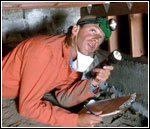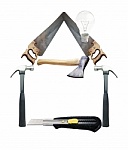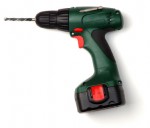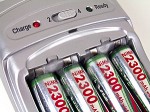Save Energy and Money in Your Home
Wednesday, February 8th, 2012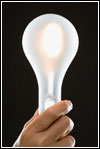 How energy-efficient is your Spruce Grove, Stony Plain, Parkland County or Edmonton area home? Chances are that no matter how well your home is doing, there’s still room for improvement, and that’s true even if you’ve taken advantage of government programs and grants to upgrade such things as the insulation, windows, heating system and the like in your home.
How energy-efficient is your Spruce Grove, Stony Plain, Parkland County or Edmonton area home? Chances are that no matter how well your home is doing, there’s still room for improvement, and that’s true even if you’ve taken advantage of government programs and grants to upgrade such things as the insulation, windows, heating system and the like in your home.
“Make your home an energy fortress”, published January 28, 2012 in the Edmonton Journal asks: “where exactly should you invest when it comes to ramping up your home’s energy efficiency?”
The article quotes Christopher Straka from Ottawa’s Vert Design, a firm that deals with residential and commercial planning, design and development: “Every home has its own energy strengths and weaknesses … based on age, construction and other factors. Only an energy audit, which you’ll need to tap into federal grant programs for upgrades, can pinpoint your individual energy issues. … your best bet is still tightening up the building’s envelope: caulking and weather stripping to reduce leakage, more insulation, and better windows and doors.”
Many of the other things we can do, the article’s author, Patrick Langston, tells us, have an initial cost, but this may be offset somewhat by government grants, and will pay off the longer we remain in our homes. Don’t forget also that each of these improvements will increase the resale value and saleability of your home. While it will cost about $1 per square foot of attic to upgrade insulation and plug air leaks, doing so can save $400+ per year. Spend $3000 to $6000 on a new high-efficiency furnace, and expect to save $500+ annually in heating costs. Switch to a tankless hot water heater at a cost of about $3000, and save $150 per year. Read the whole article for other upgrades that will save energy and money.
Planning to retrofit your home or buy a resale home? Check out fact sheets available at the Canada Mortgage and Housing Corporation website that recommend upgrades for 11 housing types in 5 regions of Canada.
Also included in the article are notes on exciting new technologies that promise to do even more for the energy misers among us. The article concludes with a reminder about the many gadgets most of us can’t live without that gobble up energy, and suggests ways we can reduce our dependence on these energy thieves. Check out the full article.
Looking for a new more energy-efficient home? Give me a call at 780-910-9669, email me at barry@barryt.ca, or contact me here.







